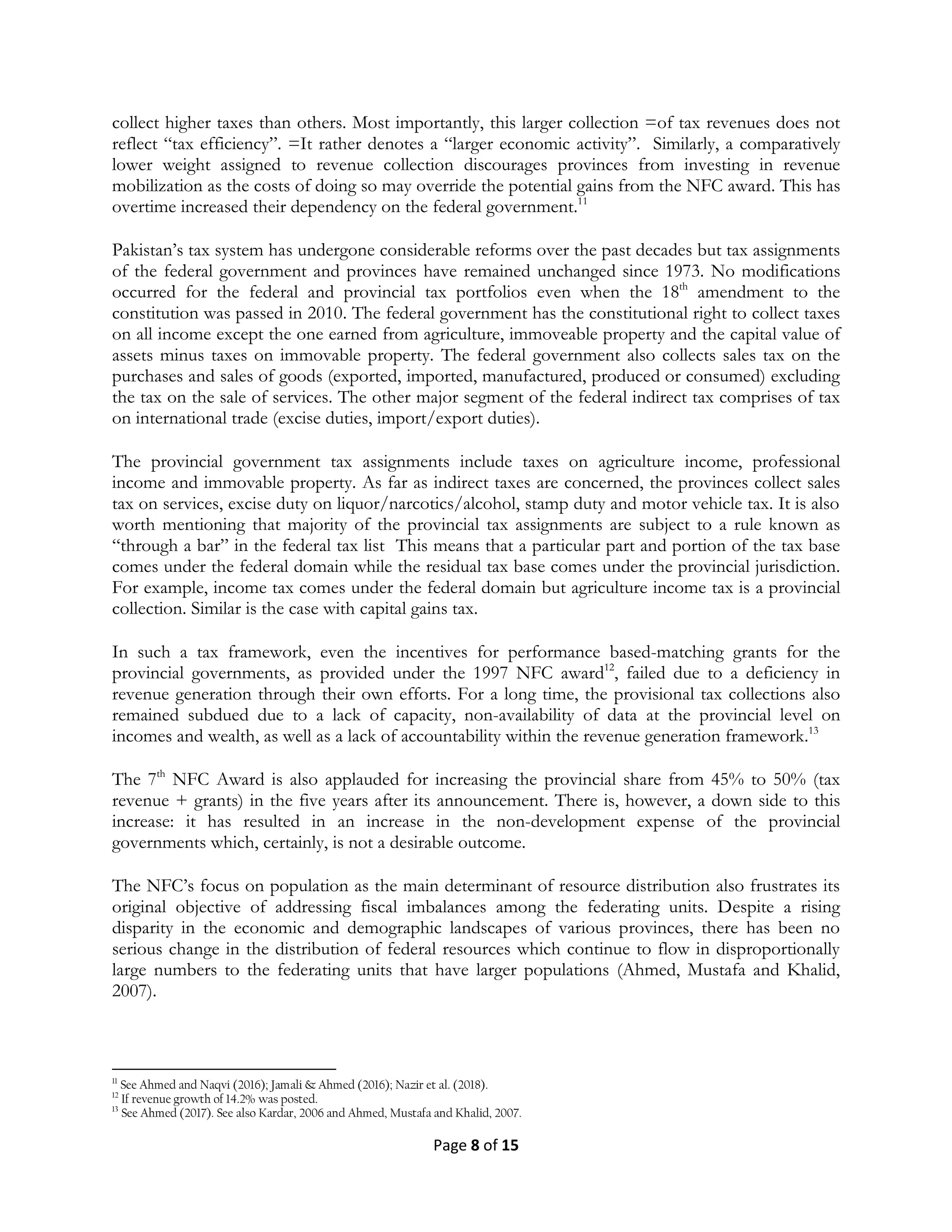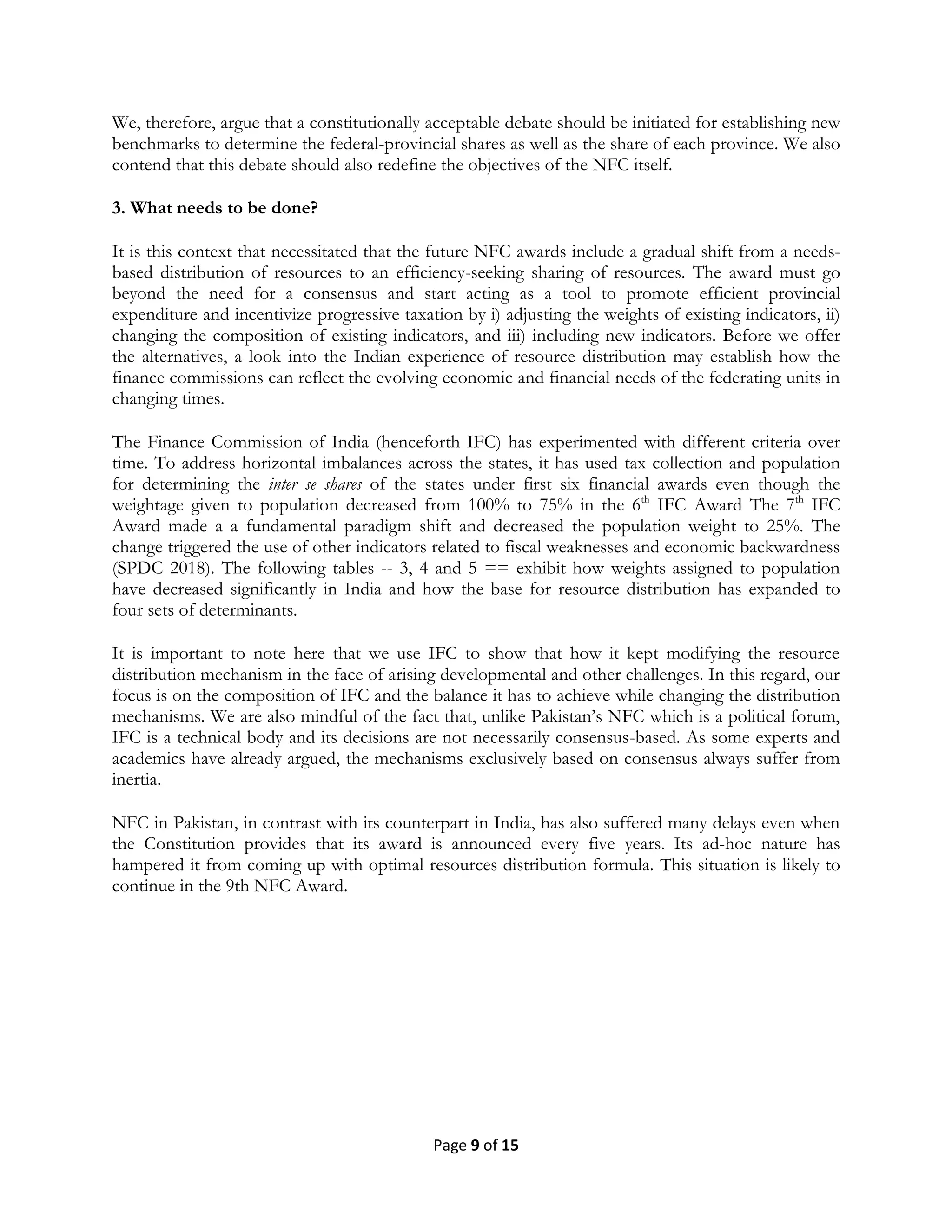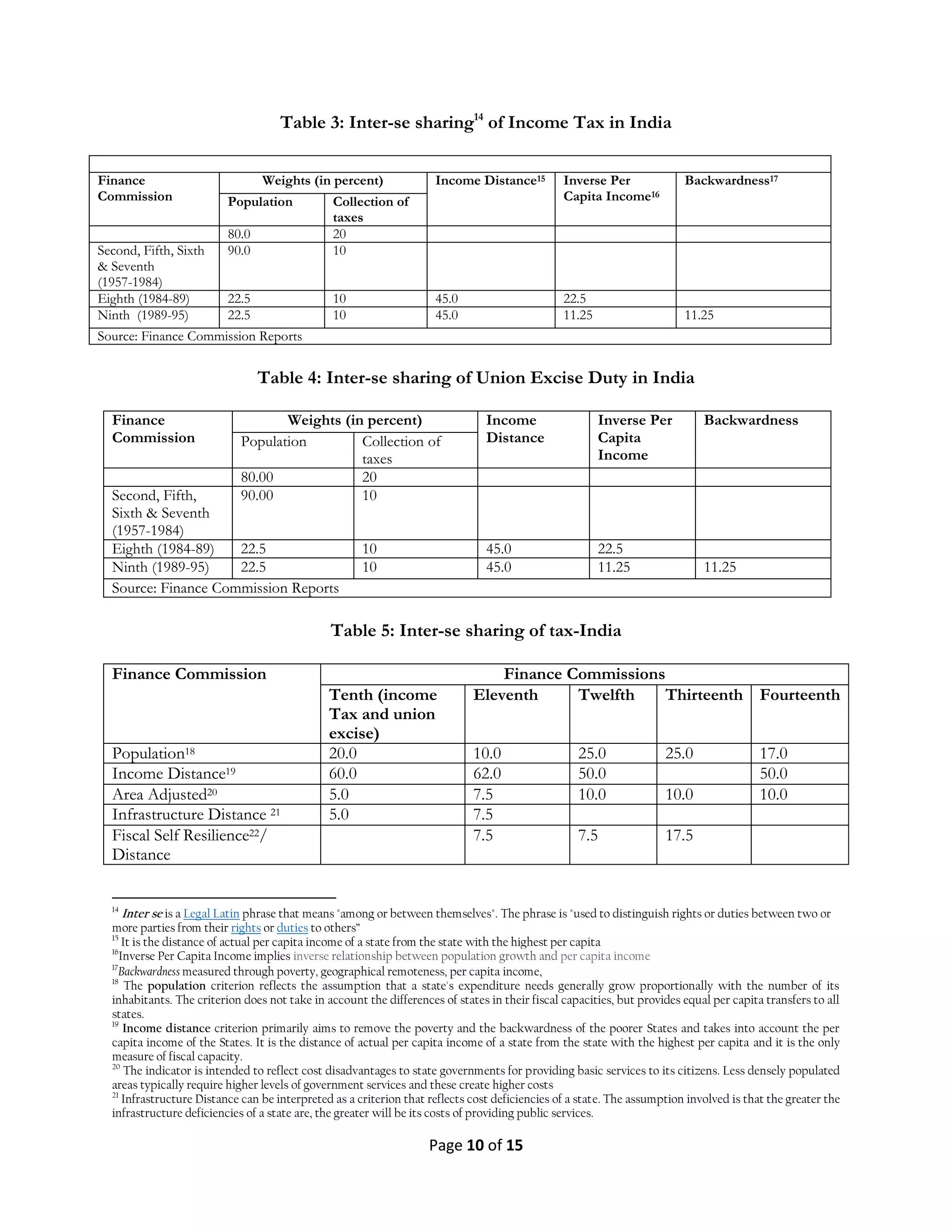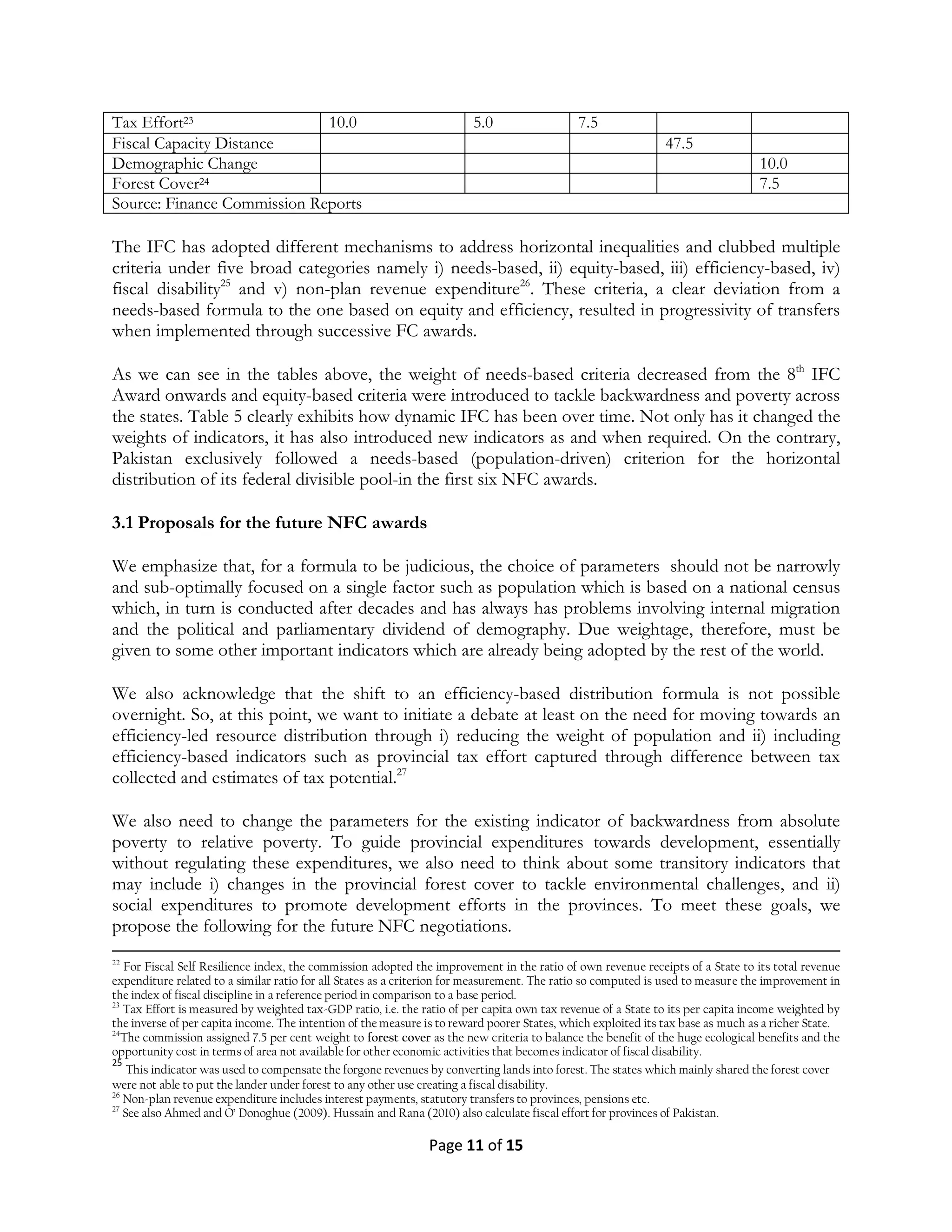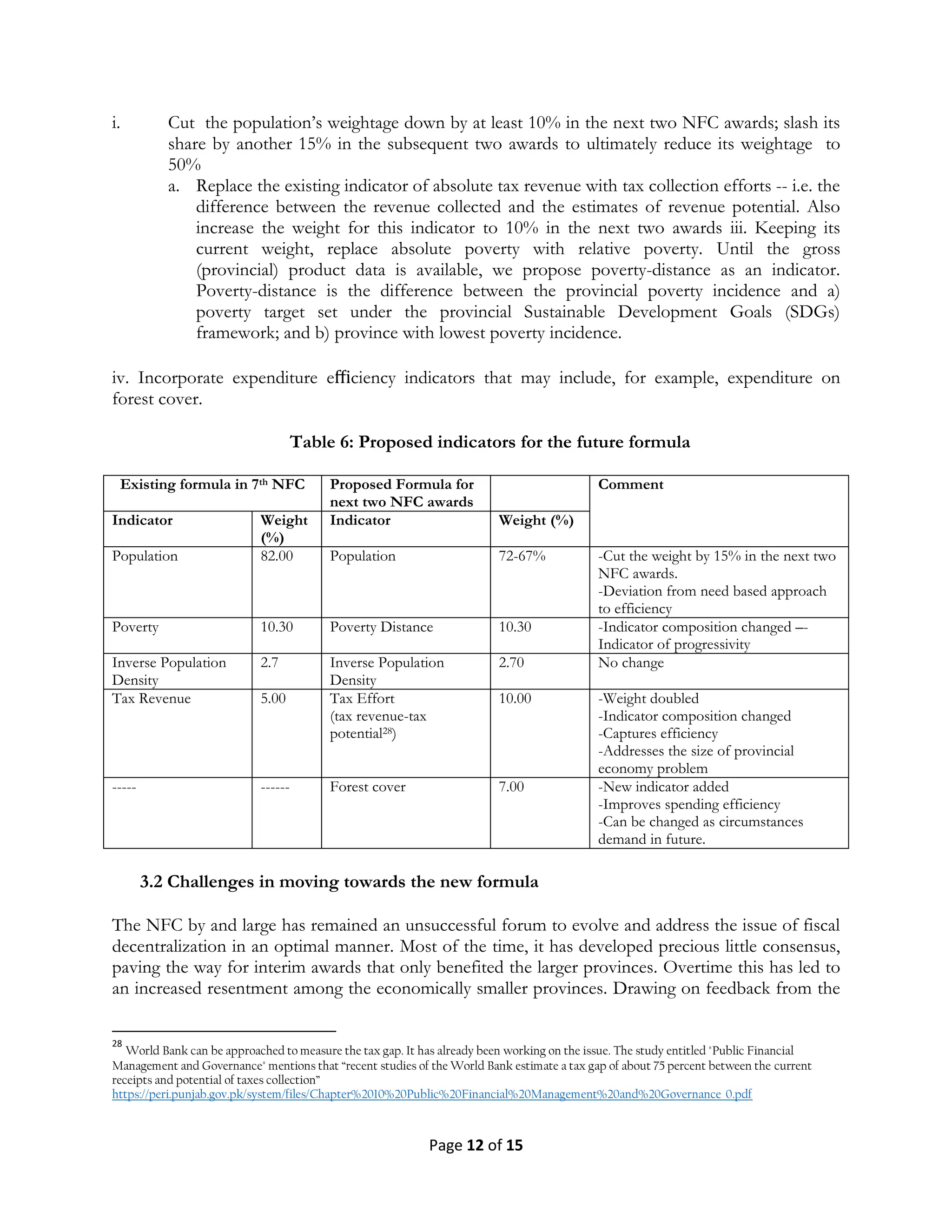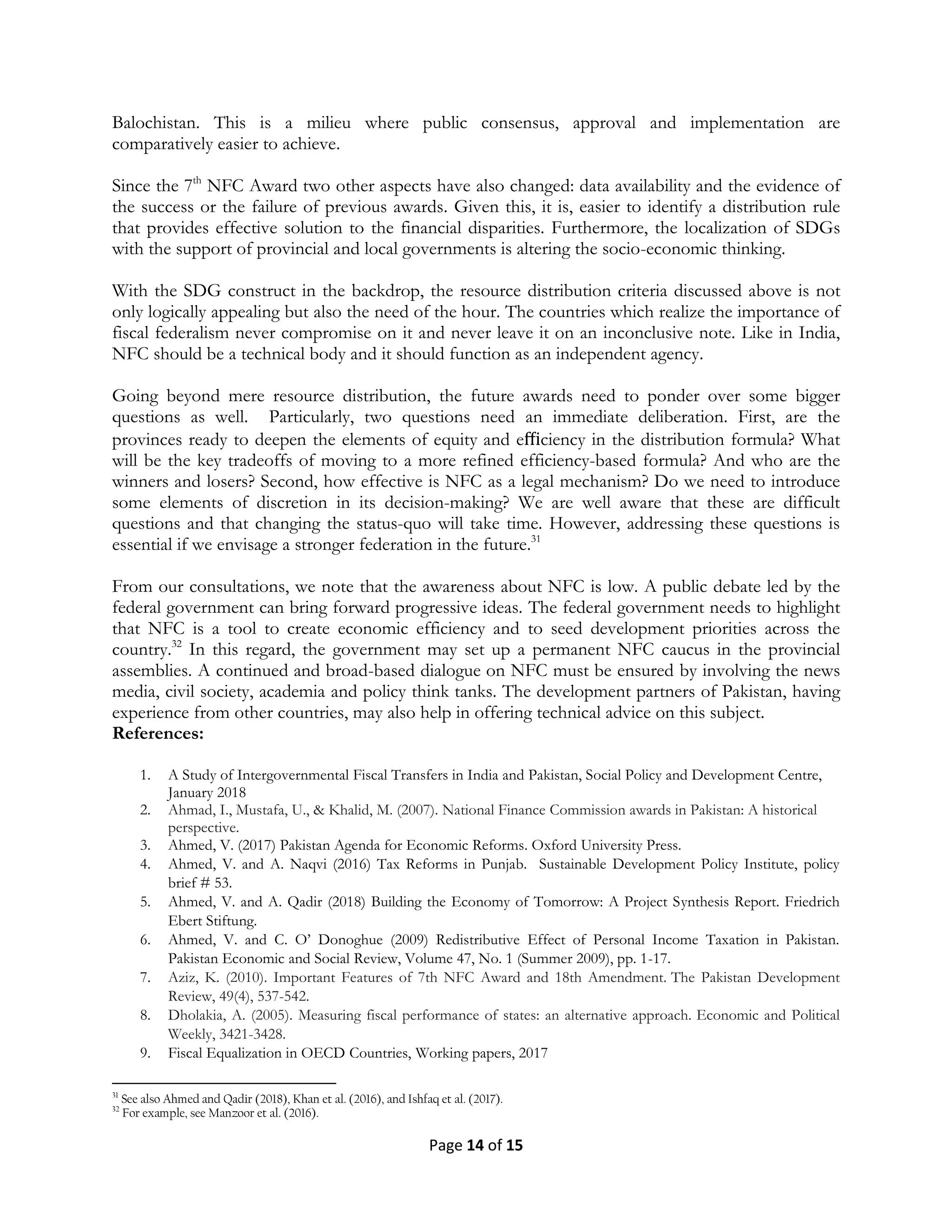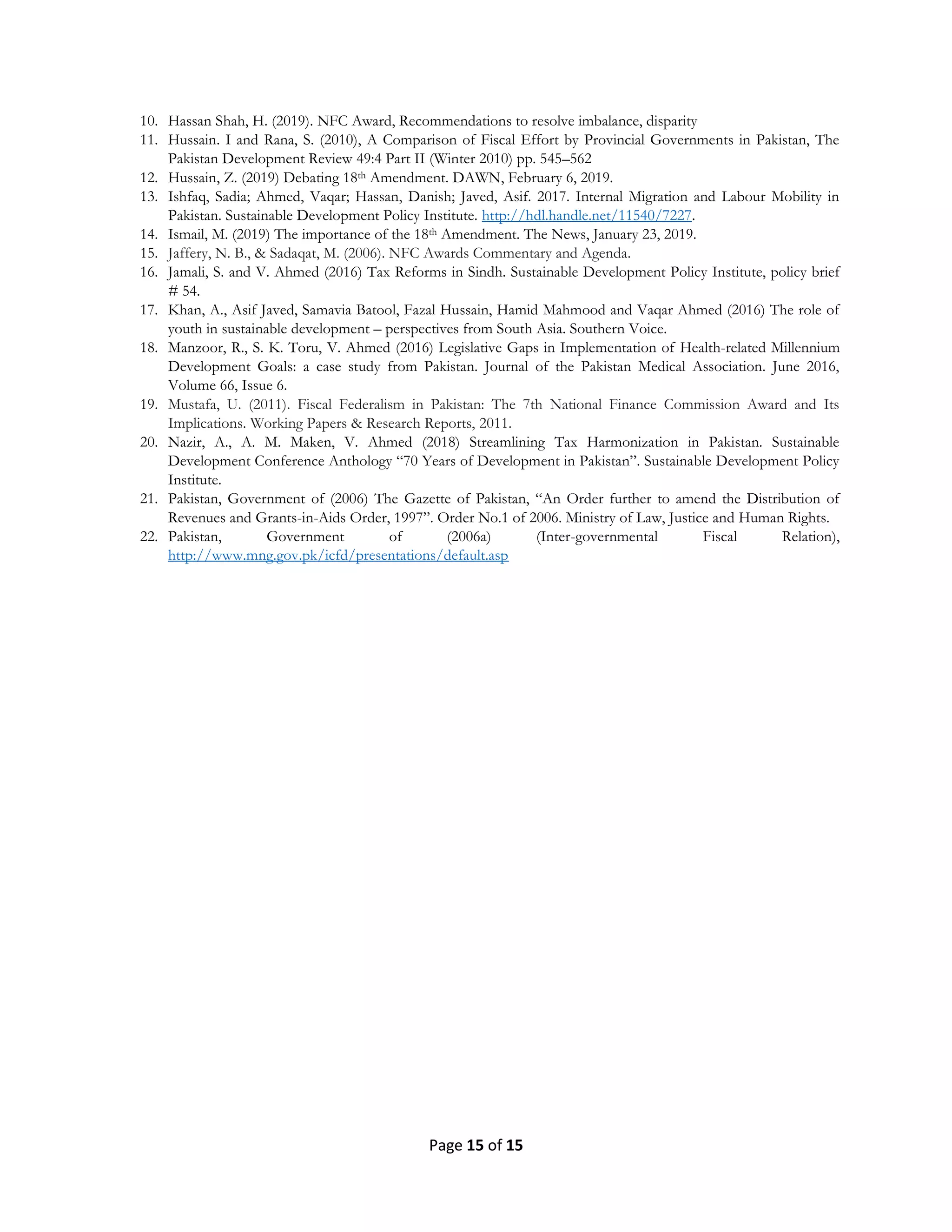This document proposes an updated formula for the horizontal distribution of resources among provinces under the National Finance Commission (NFC) award, shifting from a solely needs-based approach to one that incorporates efficiency indicators. It outlines challenges in achieving consensus on any new formula, reinforcing the significance of a debate on resource distribution mechanisms, despite the inherent political nature of NFC awards. The paper emphasizes that the distribution will remain needs-based, as population weight will continue to dominate, while advocating for the inclusion of efficiency-focused indicators in future discussions.
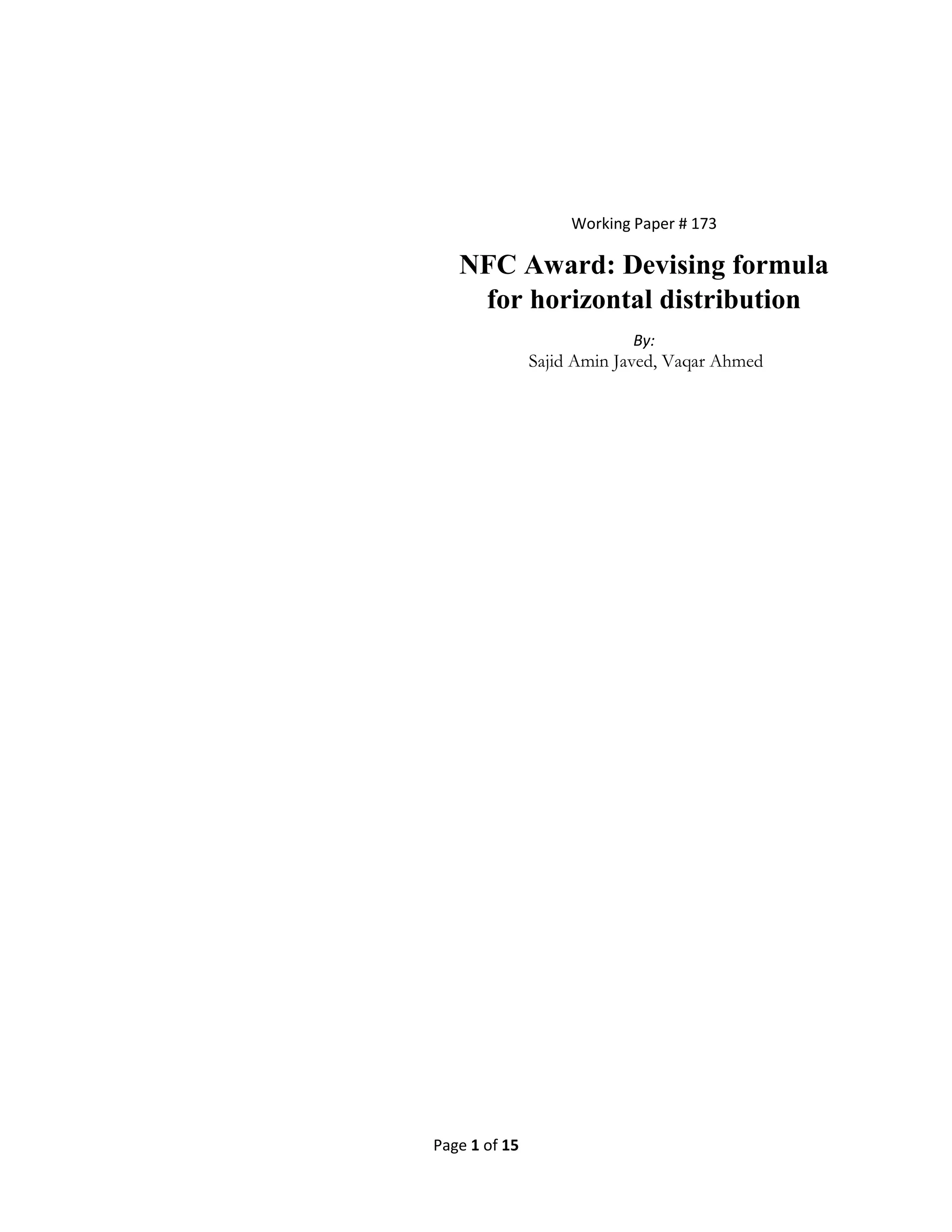


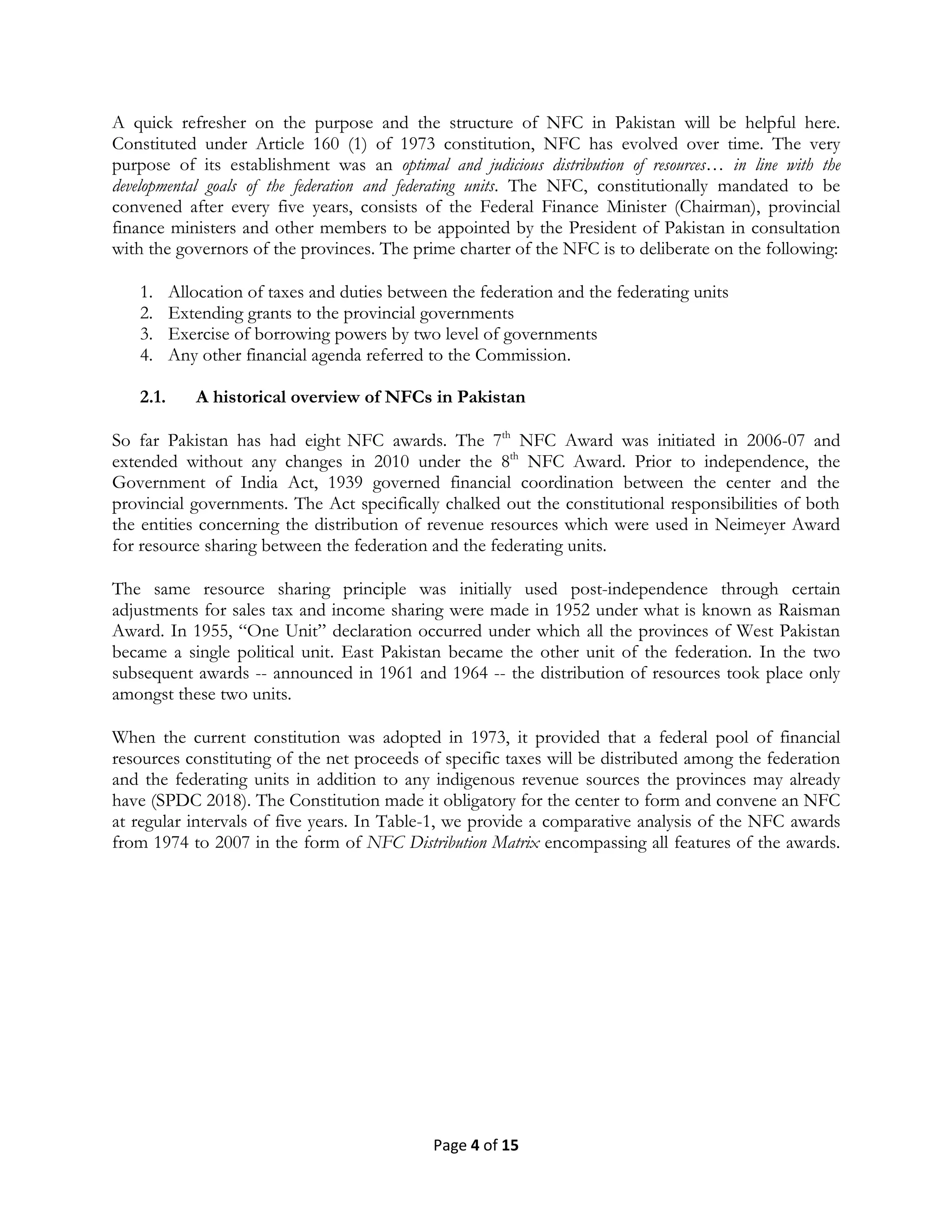
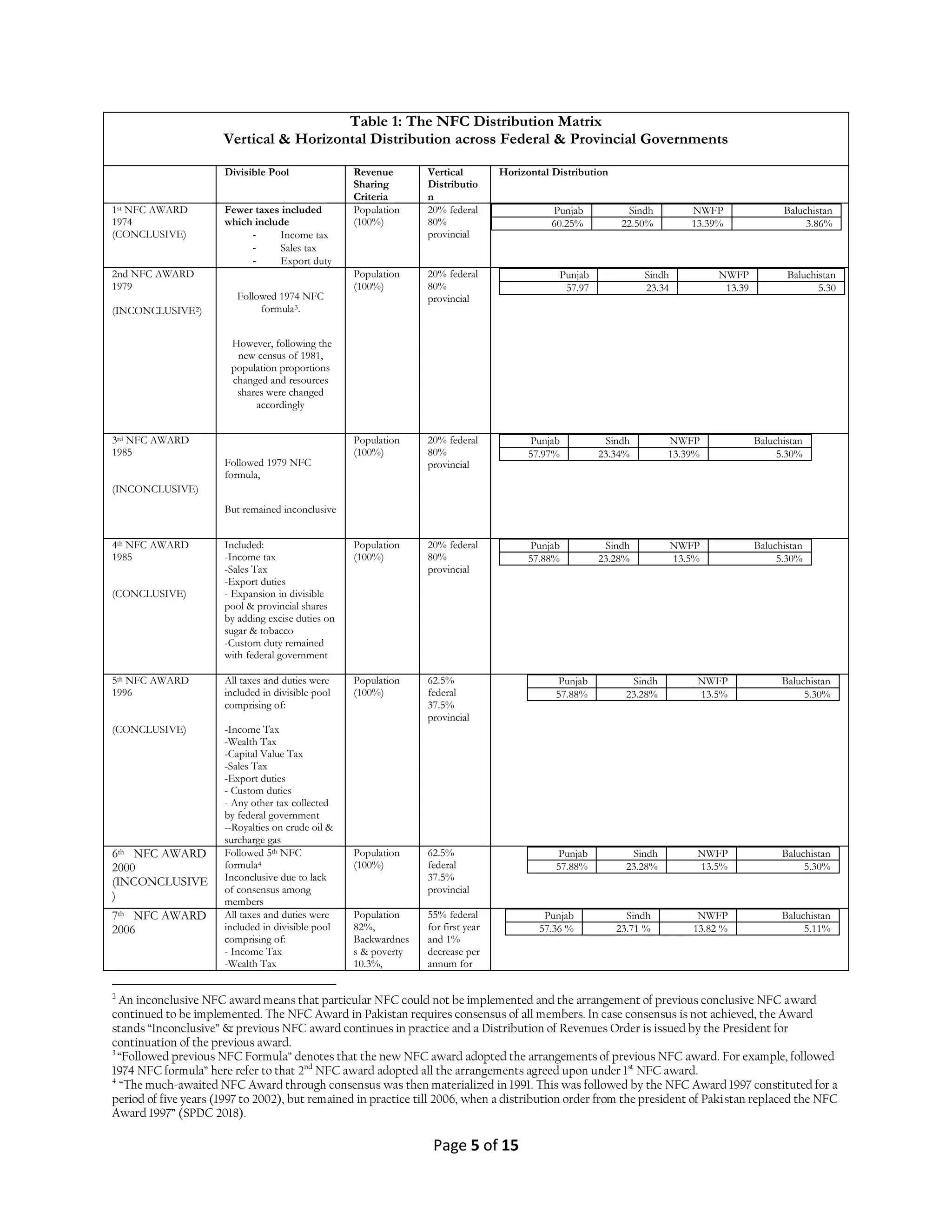
![Page 6 of 15
(CONCLUSIVE)
-Capital Val Tax
- Sales Tax
-Export duties
- Custom duties
- Any other tax collected
by federal government
--Royalties on crude oil &
Surcharge gas
Revenue
generation &
collection
5%,
Inverse pop.
density5 2.7%
subsequent
years for
duration of
award;
45%
provincial
for first year
and 1%
increase per
annum for
subsequent
years for
duration of
Award.
Source: Ahmad, I., Mustafa, U., & Khalid, M. (2007)6
and SPDC (2018)7
Table-1 provides information on major characteristics of NFC awards with a focus on horizontal
distribution. One can clearly note some key characteristics of these awards. One, over a 33 year
period between 1974 and 2007, the NFC award remained mainly limited to adjustment in the
divisible pool through inclusion and exclusion of various taxes. Two, though the 5th
NFC Award did
not make any structural change -- its broader structure remaining almost similar to the past awards,
it did include all the federal taxes in the divisible pool and, accordingly, reversed the federal and
provincial shares. It also introduced the concept of matching grants to complement the resources
that the provinces could generate on their own. The 6th
NFC award, too, adopted the same formula.
Third, and the most important point given the scope of this paper, first six NFC awards were
exclusively needs-based. The resources were distributed purely on provincial needs as manifested by
the size of their population. The larger the population of a province the higher its share. Punjab,
with its population being the biggest, continued to enjoy a resource share ranging between 57.88%
and 60.27% during 1974-2006. On the other side, Balochistan, the most deprived province, received
the smallest share of resources at a minimum of 3.8% and a maximum of 5.30%.
2.2. How different was the 7th
NFC Award?
The resource distribution apparently seems to have witnessed a fundamental shift in the form of the
7th
NFC Award8
. It shifted the criteria of resource distribution significantly and introduced elements
which were seen as making the distribution equitable and progressive. A new resource sharing
formula was, subsequently, agreed upon which provided that the resource distribution was based,
for the first, not on population alone but also on multiple other factors such as inverse population
density, backwardness and local tax revenue generation and collection.
5
Inverse population density shows the dispersion of population (Inverse pop density = 1/pop density where pop density = Population/Area (in sq.
km) Balochistan must have higher inverse population density as it has lower population per square kilometer area compared to Punjab and other
provinces. Refer to Report of the National Finance Commission (2009) for details. It is available at
http://www.finance.gov.pk/nfc/reportofthenfc_2009.pdf
6
National Finance Commission awards in Pakistan: A historical perspective
7
A Study of Intergovernmental Fiscal Transfers in India and Pakistan, Social Policy and Development Centre, January 2018
8
Literature reports conflicting start timeline for 7th NFC. It is evident that “Through Ordinance No. 1 of 2006, made amendment in the
“Distribution of Revenues and Grants-in-Aid Order, 1997”. Consequently, the new NFC was announced to take effect from 1st July 2006
[Pakistan (2006 a)].” Further Iftikhar, Mustafa & Khalid (2009) reports 7th
NFC to be effective from 2006. SPDC Report (2018) however reports
that “a major development in this regard was the 7th NFC Award of 2009 that significantly affected the resource distribution formula”,](https://image.slidesharecdn.com/nfcawarddevisingformulaforhorizontaldistributionw-173-201128100503/75/Pakistan-NFC-Award-Devising-formula-for-horizontal-distribution-6-2048.jpg)

